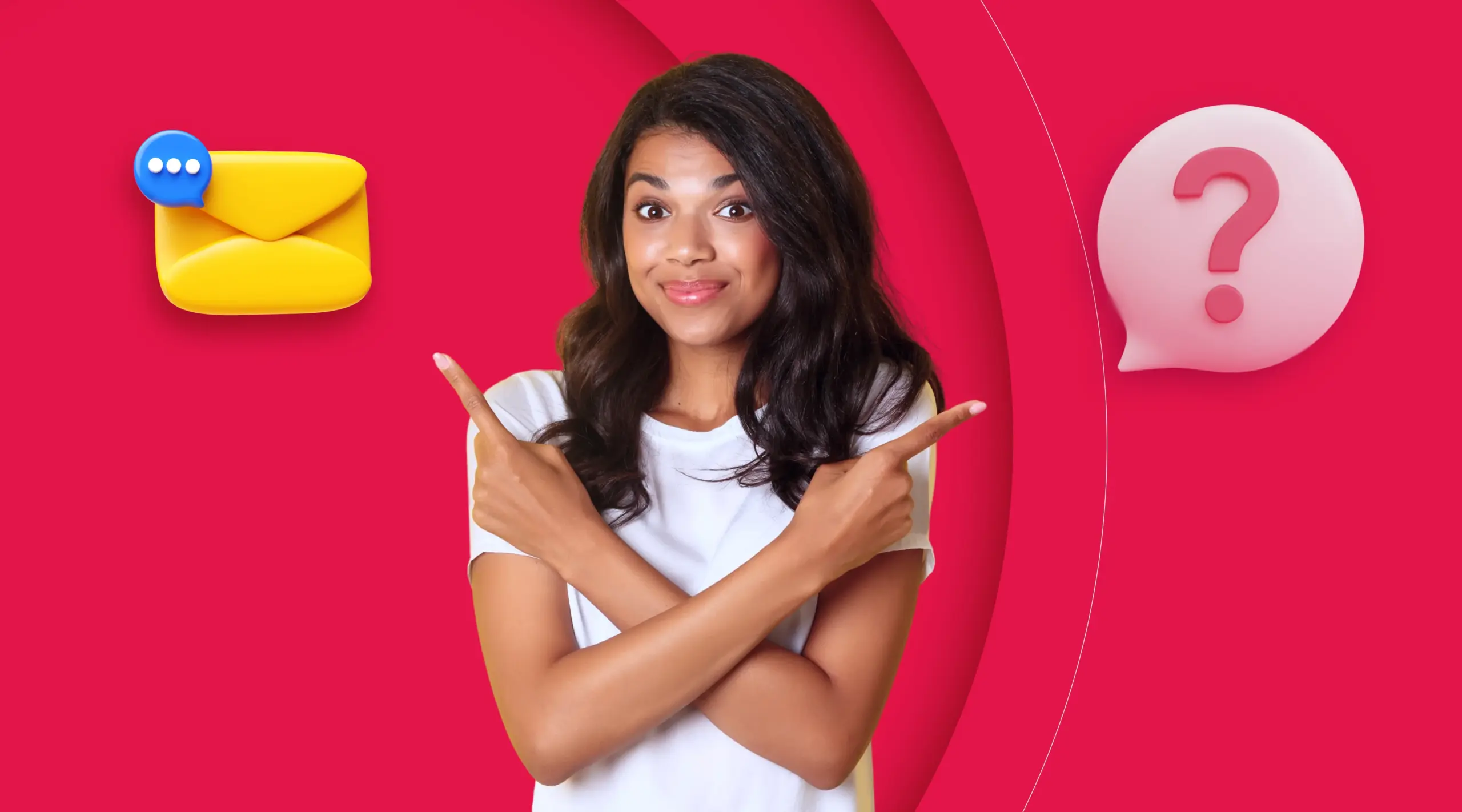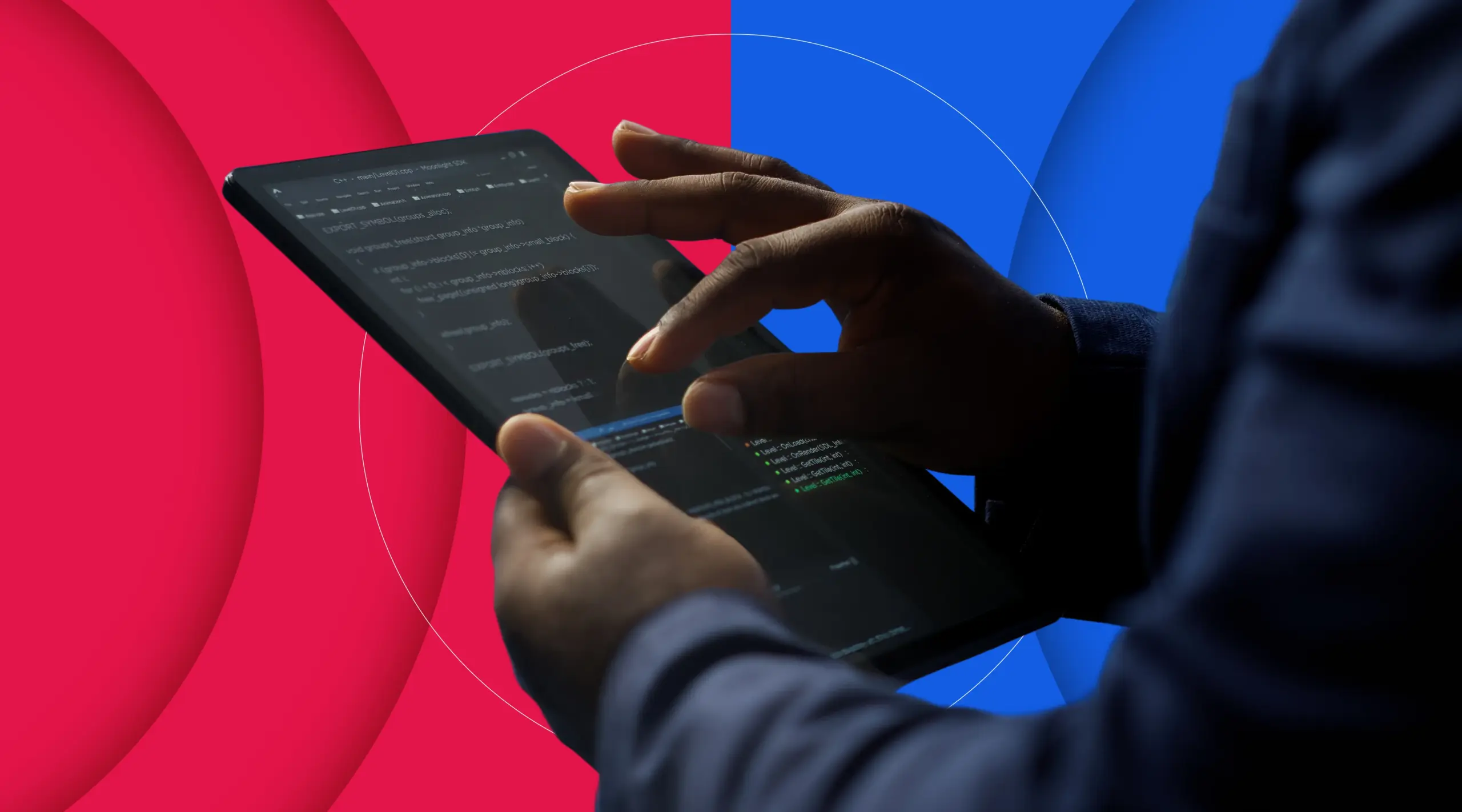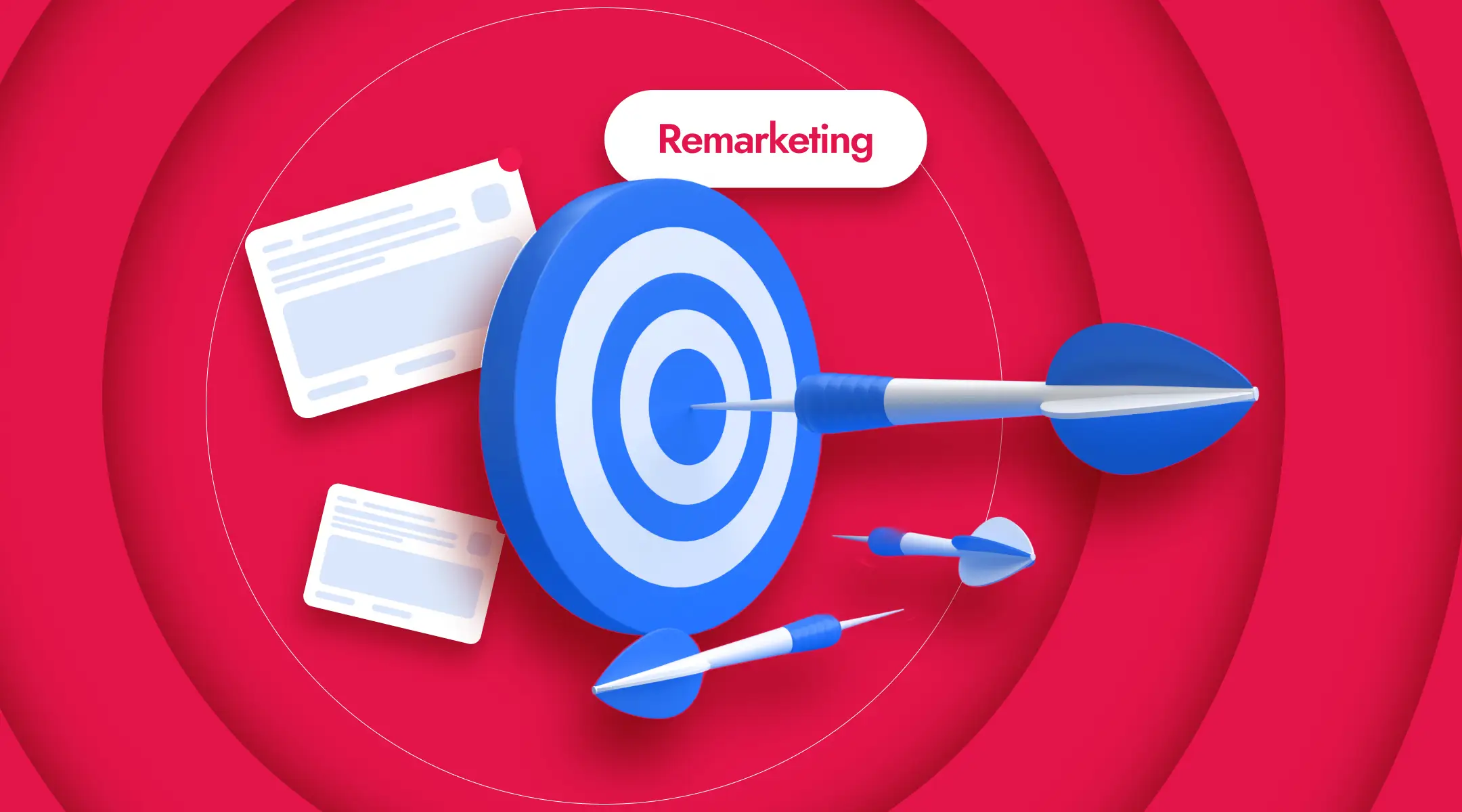
🕒 Updated October 16, 2025
Why (re)talk about remarketing in 2025 – 2026?
You invest time and budget in deploying the best strategies to attract visitors to your website… And then the majority leave without converting. Remarketing (or retargeting) serves precisely to re-engage those who have already shown an interest in your brand (visit, analytical action, email opening, opt-in, etc.) in order to obtain a return, registration, sale or re-purchase.
In 2025, this is a pivotal lever in the digital mix: it maximizes the ROI of acquisition efforts, adapts to the “post-cookies” context, and increasingly relies on first-party/zero-party data, AI and opt-in channels.
- Why (re)talk about remarketing in 2025 – 2026?
- Definition: remarketing vs. retargeting (simple clarification)
- Typical objectives (and how to measure them)
- Steps to a successful remarketing campaign
- Remarketing channels: strengths, limitations and use cases
- Operational zooms
- Best practices (2025)
- Frequent errors & quick fixes
- Trends 2025: « cookieless », AI and omnichannel
- Tools & platforms (2025 toolbox)
- Web Push by Adrenalead (powerful alternative & RGPD compliant)
- Smarter, more responsible remarketing… and better performance
- Frequently asked questions about remarketing
Definition: remarketing vs. retargeting (simple clarification)
- Retargeting: delivery of targeted ads to anonymous visitors (often via cookies or equivalent) to bring them back after a non-converting visit. Example: dynamic banners displaying the product viewed on other sites.
- Remarketing: all actions aimed at reactivating an already engaged audience (customers, identified leads or recent visitors) via email/SMS, push notifications, CRM onboarding/Customer Match, social networks, display, etc. Traditionally more oriented towards loyalty and lifecycle marketing, based on first-party data (lists, consents).
In practice, the two terms are often confused (Google Ads uses « Remarketing » for its audience lists). Remember the common intention: to remarket to a person already exposed to the brand, in order to increase the probability of conversion.
Typical objectives (and how to measure them)
- Convert first purchase / first contact. KPIs: conversion rate, CPA/ROAS, conversion time, share of assisted conversions.
- Reactivate dormant customers / increase purchase frequency. KPI: re-purchase rate, CLV, RFM, incremental revenue.
- Generate registrations (demo, trial, event, newsletter). KPI: registration rate, cost per qualified lead, post-registration activation rate.
- Educate/nurture in a long cycle (B2B, automotive, education). KPI: stage progression (MQL→SQL), content engagement, cycle time, influenced pipeline.
Steps to a successful remarketing campaign
1) Set a clear course (objectives & KPIs)
Formulate a SMART objective for each campaign (e.g. « Convert 5% of abandoned shopping baskets in 30 days »). Set the main KPIs (conversion, CTR, CPA/ROAS, re-purchase, view-through if relevant).
2) Segment your audiences
Create meaningful lists: all 30-day visitors, shopping cart abandonment, category readers, 90-day inactive customers, leads who have downloaded a guide, etc. The finer the segmentation, the more relevant the message.
3) Choose the right channels (mix & orchestration)
- Display/YouTube (Google Ads, Bing)
- Social (Meta, LinkedIn…)
- Email/SMS/Marketing automation
- Web Push Notification
- CRM onboarding / Customer Match (encrypted lists, hashing)
Think “orchestration”: each channel has a strength and a cost. The best mix depends on segment value and intent.
4) Implement tracking & compliance
- Tags/pixels (Google/Meta/LinkedIn), push script, UTM.
- Consent (compliant banners, Consent Mode if required), hashing for customer lists, page preferences.
- Data quality: deduplicated, fresh, compliant.
5) Create contextualized messages
- Dynamic creatives (products seen, benefits, social proof).
- Offers: tested discount vs. free shipping according to segment.
- Clear CTAs, reasonable frequency capping, native formats by channel.
6) Launch, analyze, continuously optimize
- A/B iterations (taglines, images, timing, offers).
- Adjust bids (Smart Bidding) and budgets according to segment value.
- Exclude converts (or switch to cross-sell).
Remarketing channels: strengths, limitations and use cases
<br> .channels-iso{isolation:isolate}<br> .channels-iso .adrenalead-static-table thead tr{<br> background:linear-gradient(90deg,#135DE4 0%,#2b70f0 100%);<br> }<br> .channels-iso .adrenalead-static-table th{<br> color:#fff;font-weight:700;text-align:left;<br> border-bottom:1px solid rgba(255,255,255,.15);<br> }<br>| Channel | Strong points | Weak points | Best use cases |
|---|---|---|---|
| Display/YouTube(Google Ads) | Massive reach, visual/video formats, RLSA | Constraint « post-cookies », perceived pressure if poorly measured | Abandoned cart, product relaunch, recall awareness |
| Meta (Facebook/Instagram) | Engaging formats (stories, carousel), social signals | Variable CPMs, depending on pixel quality and creative | E-commerceDPA, content relaunch, newsletter sign-up |
| LinkedIn Ads | B2B targeting (job, sector, account), nurturing | High CPCs, smaller audiences | SaaS demo, white paper, ABM |
| Email/SMS/Marketing automation | Direct relationship, rich personalization, low unit costs | Need for opt-in, saturation possible | Abandoned cart, customer reactivation, nurturing |
| Web Push (browser) | Browser-native opt-in, real-time, bypass adblock, cookieless | Requires opt-in, short messages | Stock/price alerts, new content, targeted offers |
| CRM onboarding / Customer Match | Large-scale first-party data activation | Variable matching rates, RGPD requirements | Reviving dormant customers, VIP campaigns |
Operational zooms
A. Google Ads (Display & RLSA)
- Tagging (Google Tag/GA4) and audiences(all 30-day visitors, shopping cart abandonment, etc.).
- Display campaigns targeting your lists; RLSA to adjust bids/search ads with existing visitors.
- Responsive creatives (multiple assets) + capping (e.g. 5 impressions/user/7 days).
- Optimization: placements, bids, extensions to YouTube if audience is large.
B. Web Push (browser)
- Choose platform
- Collect opt-in (native browser window): up to ~15% opt-in rate, often much higher than email
- Segment by behavior(page views, categories, shopping cart…).
- Scenarios: abandoned cart trigger, stock/price alert, new content, J-X promo.
- Measures: high CTR and read rates.
- Key benefits: not blocked by adblockers, 100% brand safety (system notification), RGPD compliant with native opt-in.
C. CRM onboarding & Email/SMS
- Onboarding: upload encrypted lists (hashed emails), match rate 30-70% depending on platforms; target inactive 90 days, VIP, upsell.
- Email/SMS: workflows for abandonment, reactivation, post-purchase (cross-sell), event notifications. Benchmark retention: email retargeting remains a mainstay.
Best practices (2025)
- Segment more finely (value, intent, recency, frequency, monetary).
- Personalize (creative, offer, timing) according to context (product seen, category read, industry).
- Control pressure (capping/inclusion days) to avoid irritation.
- Renew creative (avoid banner blindness).
- Test/iterate (A/B bidding CPC vs CPA, offer %, free shipping, message “social proof”…).
- Track the right KPIs (CTR, conversions, CPA/ROAS, view-through where relevant, site return rate).
- Experience first: useful, non-intrusive, exclude converts or switch to cross-sell.
- Compliance by design (explicit consents, Consent Mode, unsubscribe links, preferences page).
Frequent errors & quick fixes
<br> .fixes-iso{isolation:isolate}<br> .fixes-iso .adrenalead-static-table thead tr{<br> background:linear-gradient(90deg,#135DE4 0%,#2b70f0 100%);<br> }<br> .fixes-iso .adrenalead-static-table th{<br> color:#fff;font-weight:700;text-align:left;<br> border-bottom:1px solid rgba(255,255,255,.15);<br> }<br>| Problem | Impact | Recommended fix |
|---|---|---|
| Objective blurred | Optimization impossible, budget diluted | 1 SMART objective / campaign + prioritized KPIs |
| Audience too large/old | Low relevance, high CPA | Precise segments + recency ≤ 15-30 d (depending on cycle) |
| Overexposure | Irritation, lower CTR, negative image | Capping (e.g. 3/d), limited inclusion window |
| Forgetting to exclude converts | Wasted budget, customer frustration | Exclusion lists + cross-sell scenarios |
| Generic creatives | Low perceived relevance | DCO, social proof, clear benefits per segment |
| No iteration | Eroding performance | A/B creatives/offers/channels every 2-4 weeks |
| Compliance neglected | Legal risk, loss of trust | Explicit opt-in, CMP, consent logs, Consent Mode |
Trends 2025: « cookieless », AI and omnichannel
1) After third-party cookies, first-party/zero-party resilience
- Safari/Firefox already block third-party cookies; Chrome is gradually phasing them out.
- Response: first-party data, loyalty programs, zero-party (declarative preferences), CDP to unify & activate in real time.
- Contextual targeting (boosted by AI) + alternative IDs (Customer Match, UID 2.0, Topics API) depending on your legal framework and resources.
2) AI & machine learning everywhere
- Predictive segmentation and scoring, DCO (dynamic creative), intelligent auctions.
- Typical gains reported by 2025 benchmarks: +CTR and +post-click conversions with AI.
- Ethics/transparency: don’t over-customize to the point of being perceived as intrusive.
3) Omnichannel & unified customer journey
- Synchronize email / push / social / display / search / offline.
- Automatically stop pressure when a conversion occurs elsewhere.
- Cross-device via logged ecosystems (Google/Meta/LinkedIn).
- Phygital: drive-to-store & online↔offline attribution.
4) Privacy = competitive advantage
- Explicit consent, UI without dark patterns, clear preferences, compliant partners (IAB TCF, Consent Mode).
- Reference: reinforced obligations.
Tools & platforms (2025 toolbox)
- Google Ads (Display, YouTube, RLSA, Customer Match).
- Meta Ads (Facebook/Instagram, DPA, Stories).
- LinkedIn Ads (B2B, ABM, Lead Gen Forms).
- Criteo, AdRoll (programmatic retargeting).
- Email/SMS & automation: HubSpot, Klaviyo, Mailchimp, Sendinblue, SFMC.
- Web Push: Adrenalead (collection, segmentation, campaigns, audience network).
- Analytics & attribution: GA4, attribution models, Mixpanel/Amplitude, Data connectors.
Web Push by Adrenalead (powerful alternative & RGPD compliant)
Totally decoupled from browsing and free from any delivery medium, the notification is sent by the browser and appears directly on your audience’s screen. The subscriber doesn’t need to be on your site; they simply need to be connected to the Internet (Wi-Fi/4G). Ephemeral, it disappears after a few seconds: a low-intrusive format that subscribers appreciate. Retargeting your audience has never been so easy!
<br> .cta-remarketing-iso{isolation:isolate;max-width:1200px;margin:0 auto 40px;padding:0 20px}<br> .cta-remarketing-iso .banner{<br> background:#135DE4;color:#fff;border-radius:18px;<br> display:flex;align-items:center;justify-content:space-between;gap:24px;<br> padding:28px;box-shadow:0 12px 30px rgba(19,93,228,.18),0 4px 10px rgba(19,93,228,.12)<br> }<br> .cta-remarketing-iso h3{<br> margin:0;line-height:1.3;color:#fff;<br> font-size:clamp(1.1rem,0.9rem + 1vw,1.8rem);font-weight:700<br> }<br> .cta-remarketing-iso .cta-btn{<br> background:#fff;color:#135DE4;text-decoration:none;<br> padding:14px 22px;border-radius:999px;font-weight:700;display:inline-block;white-space:nowrap;<br> box-shadow:0 2px 8px rgba(0,0,0,.06)<br> }<br> .cta-remarketing-iso .cta-btn:hover{transform:translateY(-1px)}<br> @media (max-width:768px){<br> .cta-remarketing-iso .banner{flex-direction:column;align-items:flex-start;gap:18px}<br> .cta-remarketing-iso .cta-btn{width:100%;text-align:center}<br> }<br>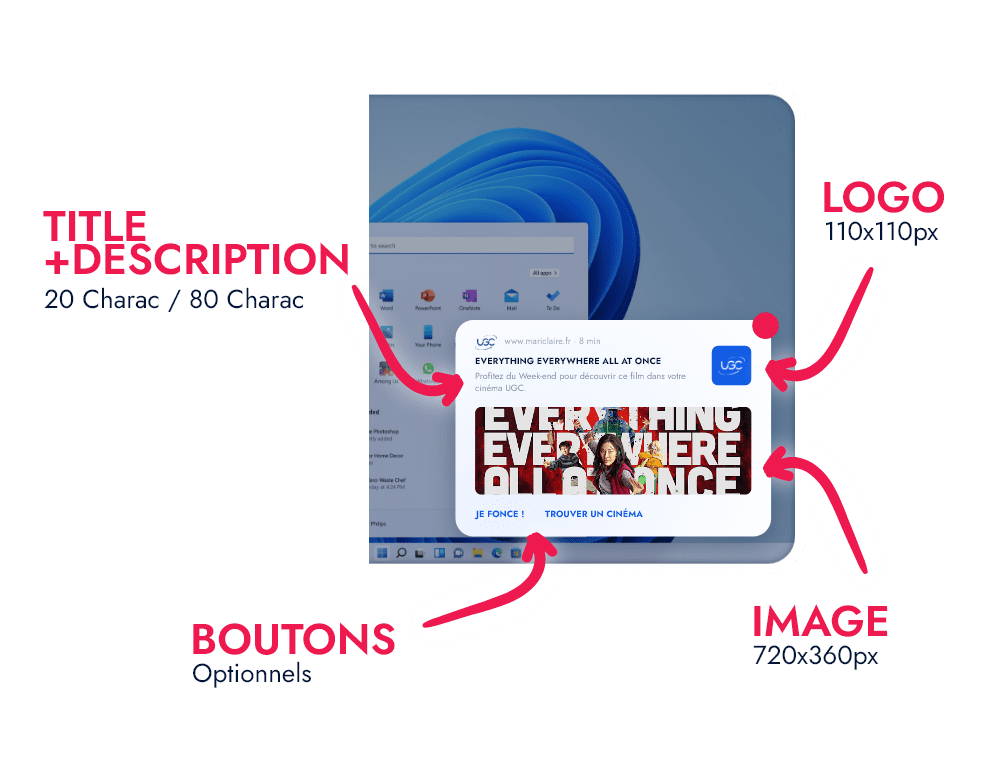
The problems that remarketing fixes
by Web Push Notification
- Total control of marketing pressure.
- No advertising fraud: direct link between the user and your brand.
- 100% Brand Safety: advertising is displayed on screen (system notification).
- Explicit consent → low-intrusive, RGPD-compliant format.
- Bypass adblockers: possibility of also contacting users equipped with an ad blocker.
Adrenalead’s Web Push audience remarketing offer:
- An Internet user visits your site.
- He is recognized if he is part of the opt-in subscriber base of Adrenalead’s advertising network.
- They receive a notification presenting your offer.
- Each click redirects to the URL of your choice. Bonus: access to qualified audience segments (e.g. clickers from your campaign, visitors to your site who have subscribed to the network).
Why it’s a “new ROI Eldorado”? Adrenalead combines collection/sending technology with exclusive audience extension (network of over 60 million opt-ins). Results seen with e-retailers: reach x3 (up to +200% reach) vs. traditional methods, average CTR >4%, conversion rate >10%-with brand image preservation and compliance. → In plain English: 3× more chance of converting a qualified lead, with no third-party cookies, and a respectful, measurable experience.
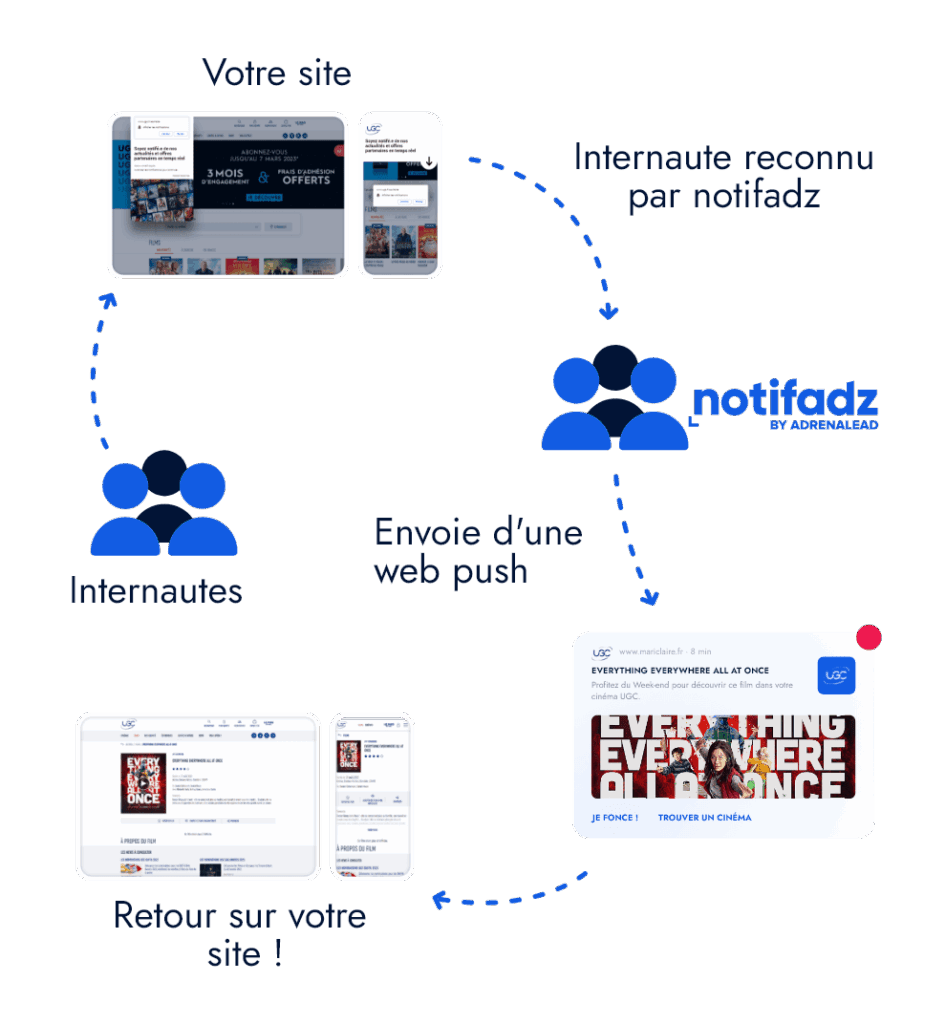
Smarter, more responsible remarketing… and better performance
Remarketing in 2025 is no longer the simple banner that “follows everywhere”: it’s an omnichannel, data-driven, privacy-friendly orchestration boosted by AI. The end of third-party cookies is forcing a salutary mutation: first-party/zero-party data, contextual targeting, alternative IDs, opt-in channels. In this evolution, Web Push Notification – in particular the Adrenalead offering – is emerging as a performance gas pedal: real-time, RGPD-ready, brand safety, high engagement, independent of cookies and adblockers.
It’s up to you: apply the objective → segment → channel → message → measurement → iteration method, activate relevant scenarios, and pilot your budgets based on incremental results. You’ll be better able to turn your almost convinced “” visitors into customers – and your customers into followers.
Frequently asked questions about remarketing
Remarketing vs retargeting, what’s the difference?
- Retargeting: mainly targets anonymous visitors via display/social (often ex-cookies).
- Remarketing: encompasses all re-engagement channels (email/SMS, Web Push, Customer Match, etc.) and relies more on first-party data.
How to run a successful remarketing campaign?
- Set a single objective.
- Segment your audience.
- Choose 1-2 consistent channels (e.g. Google Display + Web Push).
- Set up tags/UTM/Consent Mode.
- Create messages by segment and map frequency.
- Track CTR / Conv. / CPA and iterate weekly.
Which remarketing tools should I use?
- Reach: Google Ads/YouTube, Meta.
- B2B: LinkedIn Ads.
- First-party activation: Customer Match & CRM onboarding.
- Real-time direct opt-in: Web Push (e.g. Adrenalead).
- Retention: Email/SMS + automation.
- Measurement: GA4 + attribution.
How to use data to improve performance?
- Behavioral segments (pages, events, recency), CRM (RFM, inactives, VIPs) and zero-party (preferences).
- UTM everywhere, track ROAS/CPA + view-through if relevant.
- Identify optimal frequency before saturation.
- Test competing offers (discount vs. delivery).
- ActivateAI for DCO/Smart Bidding.

